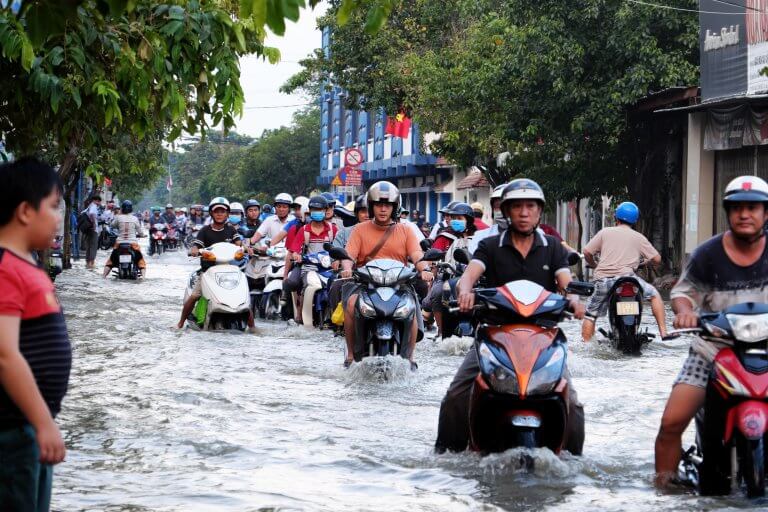Asia’s flood risk landscape shaped by human intervention
May 13 2021 by Raymond Barrett
While climate change is altering the flood risk landscape for insurers across Asia, speakers at a recent online event organised by InsuranceAsia News (IAN) reminded the audience that the human element is still a key factor that cannot be ignored.
In March, flooding in New South Wales and Queensland has generated over US$827 million in claims, according to loss data aggregator firm Perils.
Karl Jones, head of APAC analytics and advisory, Guy Carpenter, told the audience that these losses are a “warning signal” and that there was still debate over whether affordability, consumer choice or a lack of awareness were driving the level of cover being taken up by the public.
“While insurance is available, it’s not always bought,” he said.
And it is not only developed urban areas like Sydney that are facing an apparent increased risk from flooding.
Balaji Vijayakumar, head of cat management Asia Pacific & MENA at Canopius, said the rapid pace of urbanisation in India means that local governments do not always have access to adequate hazard mapping.
In particular, he flagged the southern city of Chennai as a place where the urban footprint has increased significantly and where the rapid growth makes it difficult for the local government to plan adequate flood mitigation.
“By the end of this decade, it’s projected that some states [in India] will have at least 50% of the population in urban areas,” he said.
Elsewhere in Asia, he said studies had flagged Jakarta, Bangkok and Dhaka as the cities most suffering from land subsidence in the region and are thus facing increased flood exposure.
As countries and governments seek to mitigate the risk from flooding, Vineet Kumar, head of cat perils Asia, Swiss Re, pointed out that it can be difficult to create effective data models as flood risk is very localised where even a few metres can make a big difference.
Furthermore, as flooding is a secondary peril based on an interplay of physical and social factors, there can be gaps when it comes to data modelling.
“It makes this risk very underestimated … it’s a hidden risk,” he said, adding that flood is the peril that will most benefit from new data models currently being created across the industry.
From a reinsurance perspective, Ahmad Noor Azhari Abdul Manaf, senior vice president and chief underwriter at Malaysian Re, also flagged the role of urbanisation and data in shaping the Asia flood risk landscape.
“As a reinsurance company in Malaysia that holds about 50-60% of the market, we need to make sure flood is being taken care of,” he said. “One of the challenges we are facing currently is to encourage the insurance companies, the [industry] players, the authority to provide better data for us to capture [the risk] and price it properly.”
However, Iain Reynolds, co-head of P&C reinsurance and head of analytics, Peak Re, stressed there is always a human element when it comes to river flooding, adding that this factor in particular makes it extremely difficult to model. He noted that the 2011 floods Thailand were an example where a lack of human intervention exacerbated the damage from a flood.
“We are not powerless to intervene,” he said, while cautioning that while human intervention can save human lives, it might not necessarily benefit insurance companies.
To hear the whole discussion, click here.
-
Allianz General | Allianz General combines innovative protection solutions while powering social good to lead Malaysian market
The insurer proactively addresses emerging risks and evolving customer protection needs while giving back to the community.
-
Sedgwick | Asia’s Energy Transformation – Balancing Growth, Risk and Renewables
Energy market presents unique risks, especially in a region which includes China and Japan as well as developing nations like Vietnam and the Philippines.
-
Beazley | Turbulent Waters: the maritime energy transition challenge
Businesses are facing a complex transition to non-carbon energy sources amid a push to achieve net-zero emissions for the marine sector by 2050.
-
Aon | Navigating shifts in the global and Asia insurance markets
Neelay Patel, Aon head of growth for Asia, says the market in Asia is at an ‘interesting stage of the cycle’.

